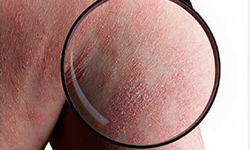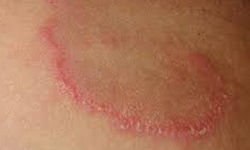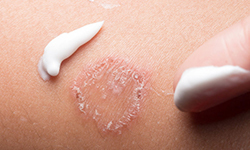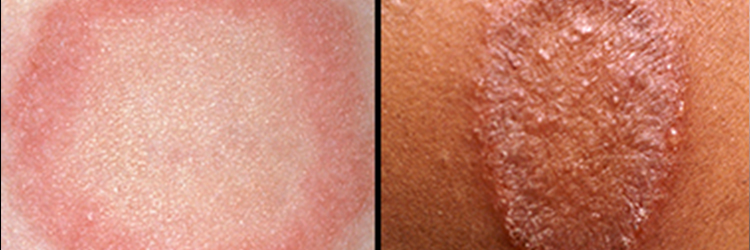A chronic skin condition, psoriasis is caused by the rapid growth of skin cells and inflammation. When diagnosed with psoriasis, the life cycle of your skin cells changes. In a typical skin cell growth cycle, the cells grow, live for a period of time, and die which is set at a regular routine. However, when skin cells are affected with psoriasis, you will find atypical rapid growth in the skin cells. This rapid growth of skin cells causes a build-up on your skin’s surface and it leads to thick, scaly, red patches of skin. You will find that psoriasis most commonly affects the knees, elbows, genitals, and toenails.
There is more than one type of psoriasis. To determine the type of psoriasis that you’ve been affected with depends on the part of your body that shows the signs of infection and the symptoms as well. Most importantly, psoriasis is not contagious.
Ringworm or dermatophytosis on the other hand is a fungal infection that causes a circular red rash to develop on your skin. Typically, the rash appears as a red circle on your skin and may or may not itch. However, if not treated on time, the rash can possibly grow in size and the infection can spread over other parts of your body. Unlike psoriasis, ringworm is contagious and can affect those you come in contact with. Again, unlike its name, ringworm is not caused by worms.
SYMPTOMS OF PSORIASIS

- Red patches on the skin
- Silvery scales over the red patches on the skin
- Scaling
- cracked skin that could lead to bleeding
- Burning or itching of skin
- Soreness on the red, scaly skin
- Stiff joints
- Thick, ridged, or pitted nails
As you already know, psoriasis is a chronic condition and can cause scaling and redness over a couple of patches of your skin or cover a large area. There is treatment available for this skin condition which can reduce the symptoms but there is a good possibility that once affected, psoriasis will remain an issue for the rest of your life. Fortunately, however, there are people who have experienced low to nil activity of this skin condition over a certain period of time which is called remission. Post this period, there could be a period of increased activity as well.
SYMPTOMS OF RINGWORM

- Red, scaly area which may or may not itch
- Red, raised border around the scaly area
- Expanding scaly area that forms a circle
- Red circle with bumps or scales and a clear centre
TREATMENT FOR PSORIASIS

- Topical treatments
- Light therapy
- Oral or injected medications
TREATMENT FOR RINGWORM
Since ringworm is a skin infection caused by a fungus, an anti-fungal medication can be used to treat it. While in some cases you will find people responding well to ointments, in other cases you will find them opting for an oral medication. The reason behind this is the severity of the infection. If you’re severely affected with ringworm, your doctor will most likely prescribe you an oral medication.
Although ringworm and psoriasis are both different types of skin conditions, they can be effectively managed and treated.
Psoriasis does not have a permanent cure yet but with proper treatment the symptoms can be reduced. Treating ringworm properly can eliminate the infection altogether and that will even reduce the chances of other people contracting it from you. But you should know, even if you’ve been affected with ringworm once, it can occur again unless you take proper care and maintain good hygiene.
If you have an unusual spot on your skin or if you develop one in the future, just get in touch with our expert dermatologists at the Skin and Hair Academy and make sure you get yourself checked before the condition gets worse.














